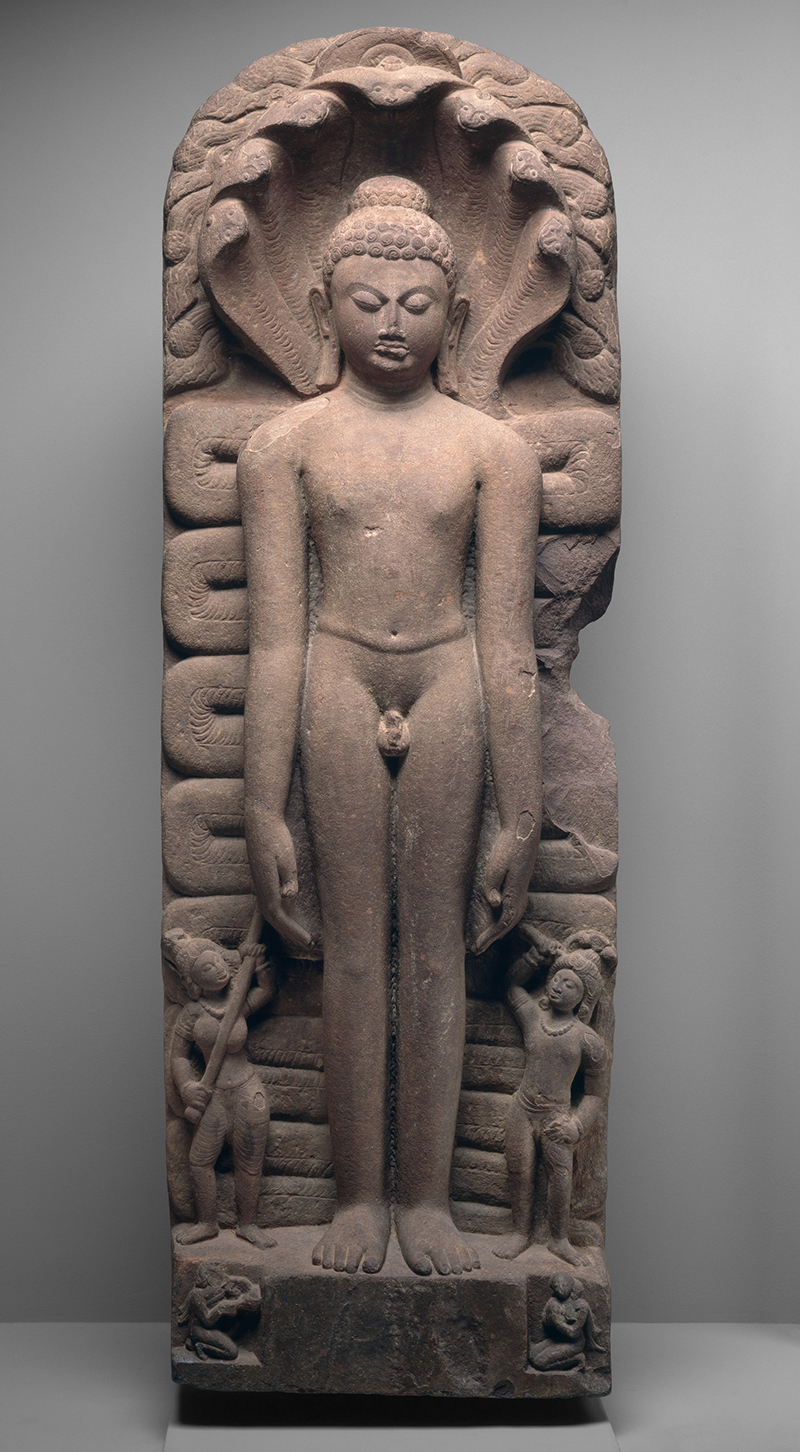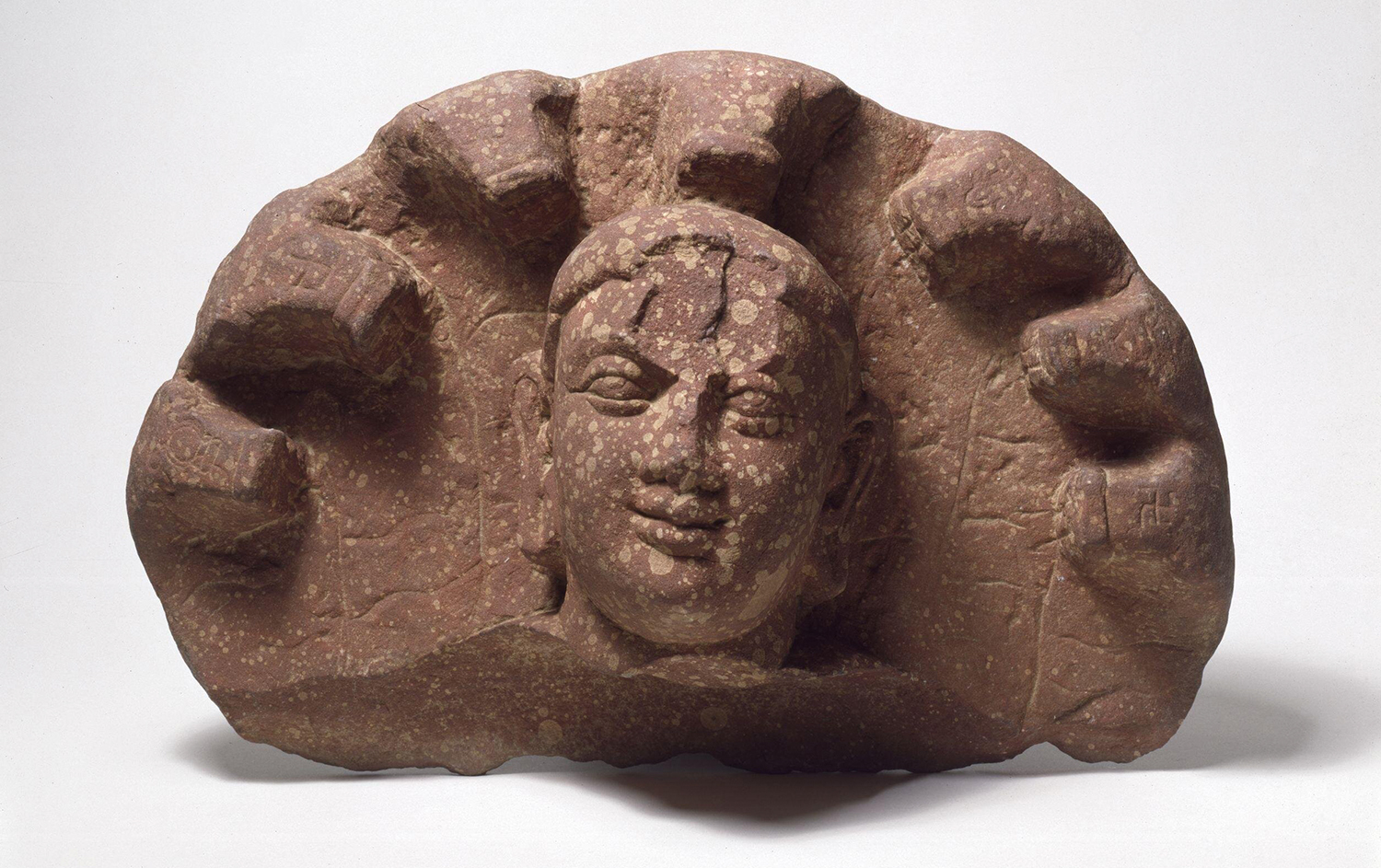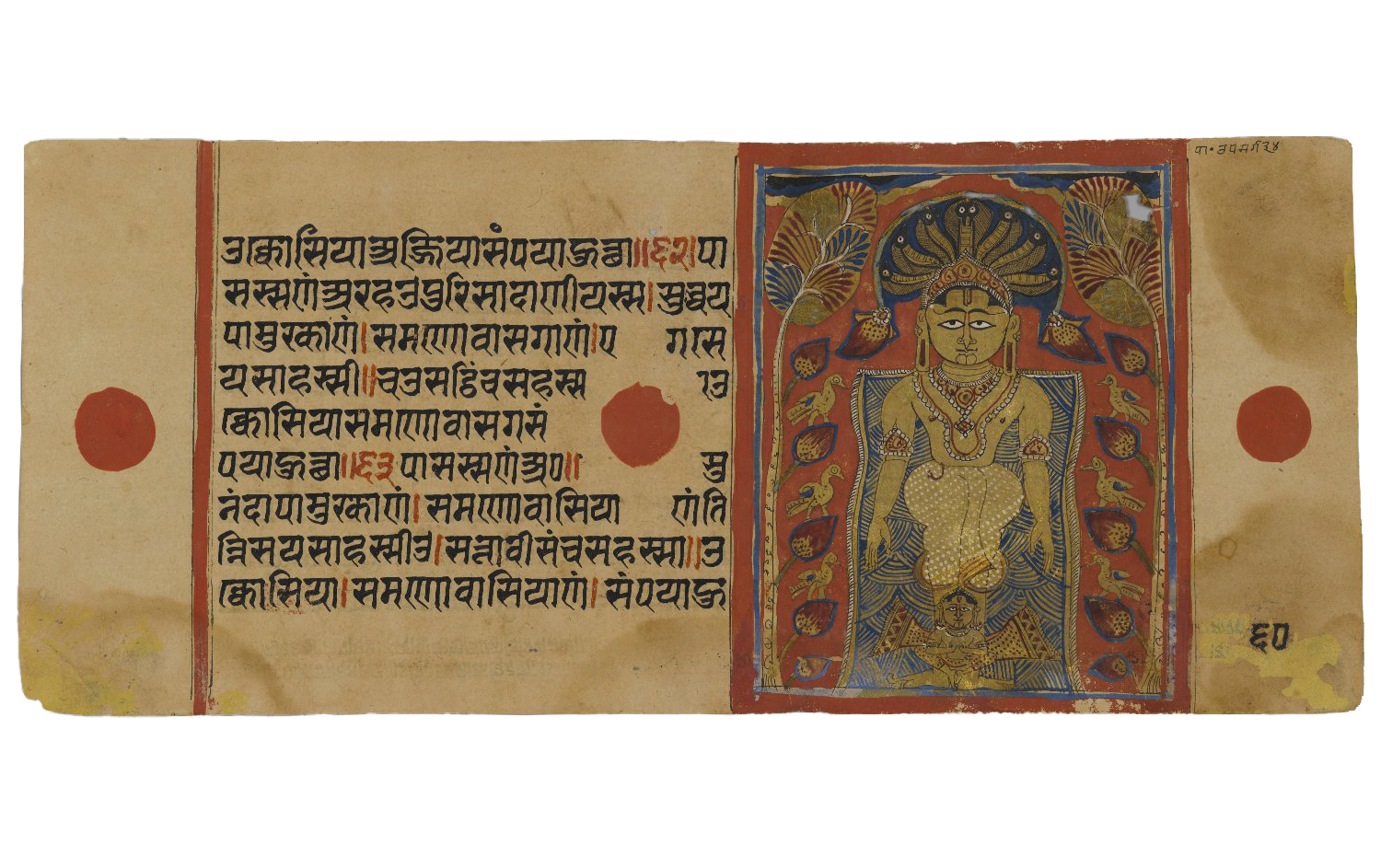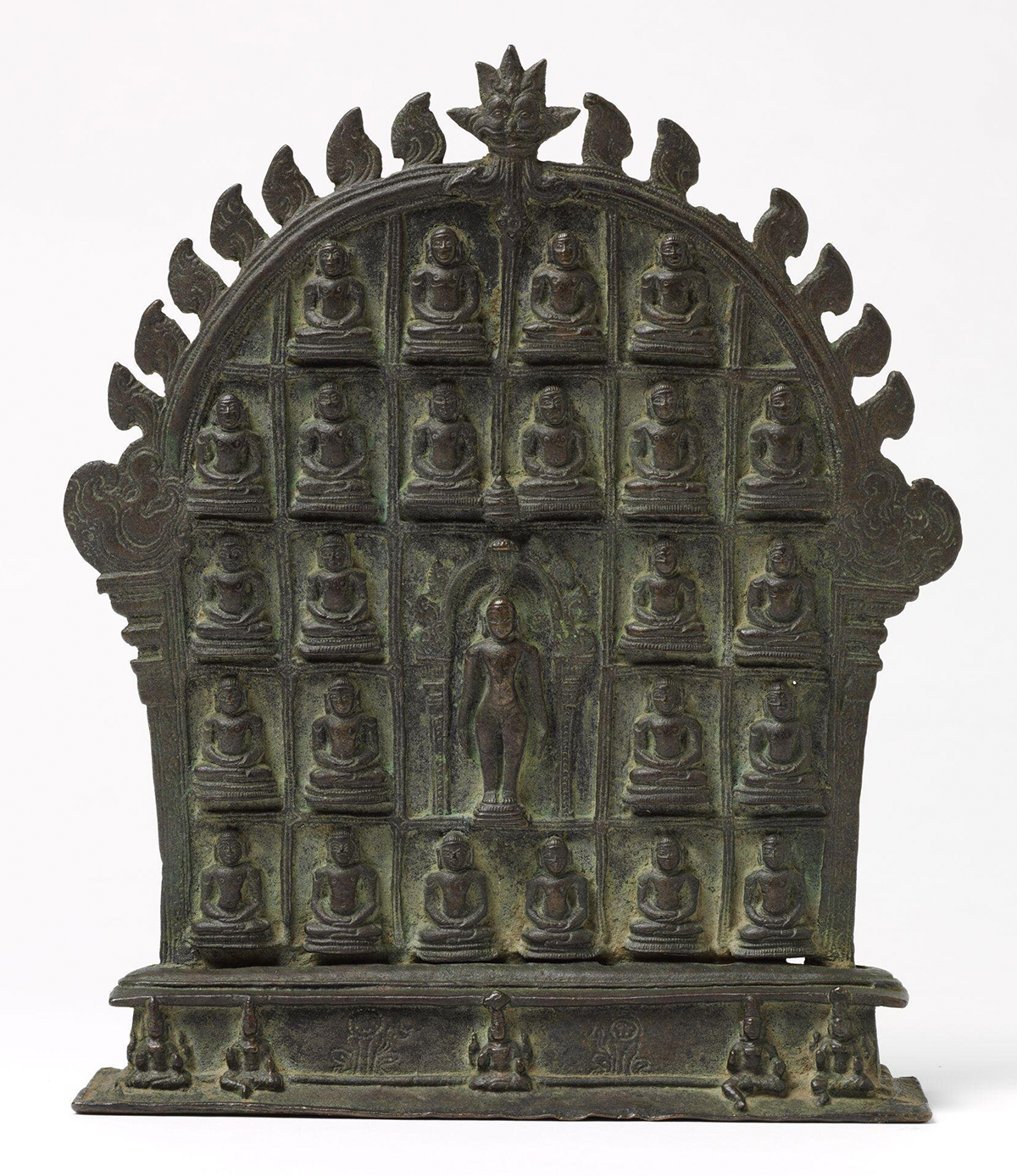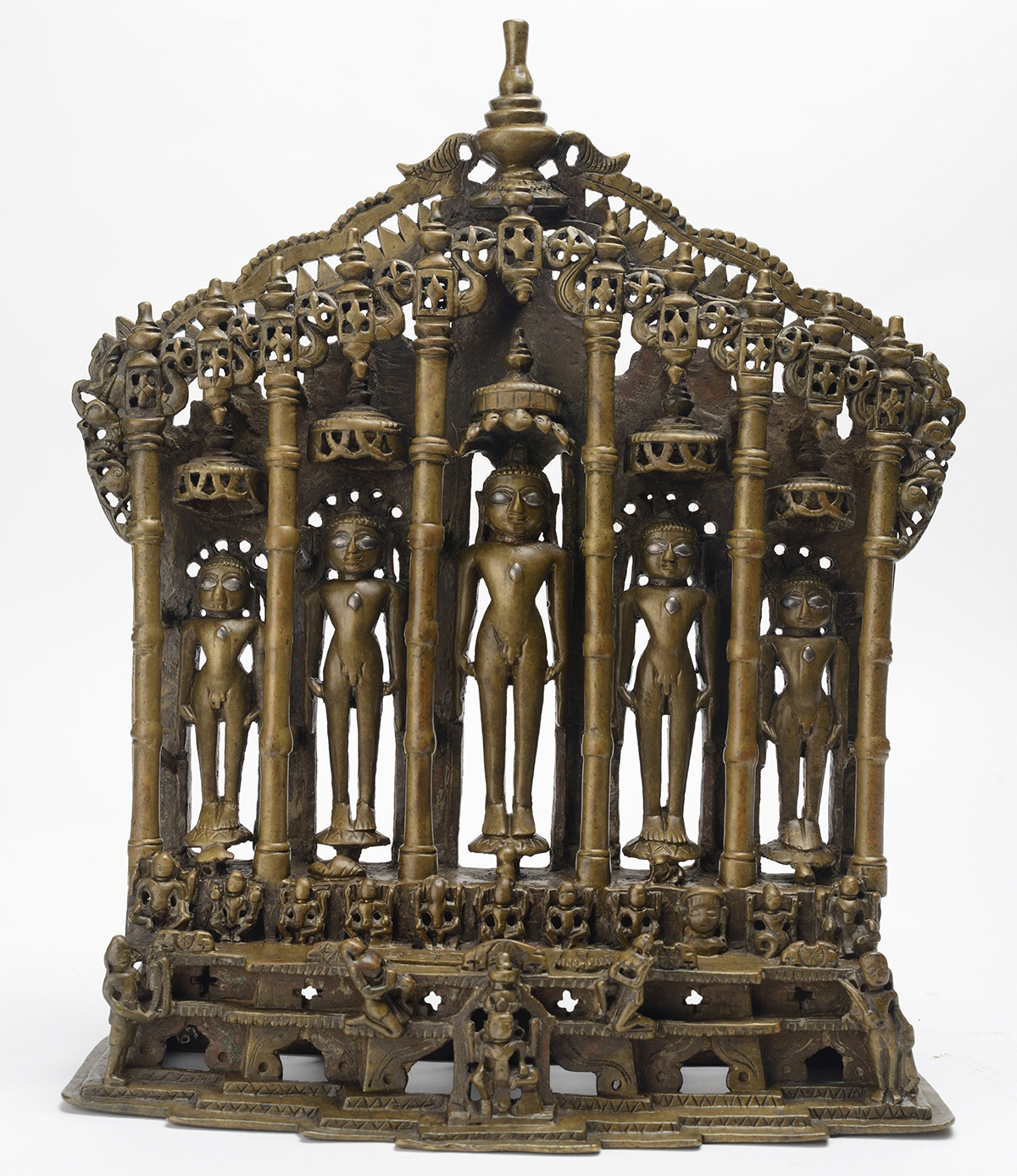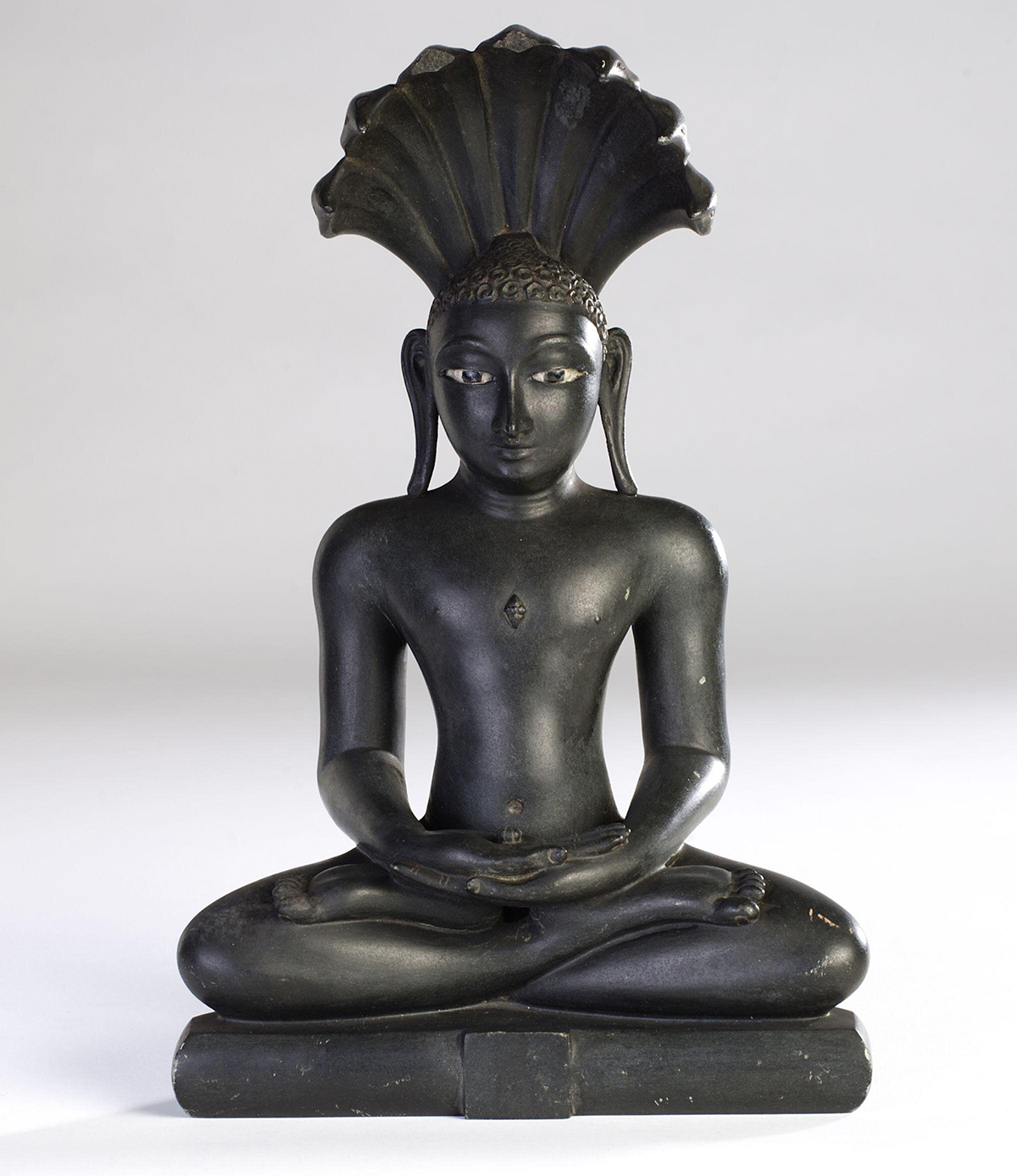ARTICLE
Parshvanatha
Parshvanatha is represented in various mediums and sizes in temples, shrines, bronze images, manuscripts, paintings, hero-stones, ayagapatas, or carved votive stone tablets, and panchatirthis, so named because they depict five figures. The earliest archaeological evidence of images of Parshvanatha were found at Kankali Tila in Mathura, Uttar Pradesh. These sculptures are dated to the first century BCE, although historians differ in their opinions regarding this estimation. Other images of Parshvanatha during this period depict him in ayagapatas. Another significant stylistic depiction of the Jinas in Mathura are sarvatobhadra, which feature four tirthankaras including Parshvanatha facing the four cardinal directions. Sarvatobhadrikas depict the Jinas delivering their first sermons to the samavasarana after enlightenment, which justifies their facing all four directions. Over time, the convention of such polytheistic depictions of tirthankaras would give way to monotheistic ones.
Parshvanatha images generally portray him either seated in padmasana or standing in the kayotsarga pose. He is commonly attended by yakshas, and in Kushana period images, by other tutelary figures such as monks, nuns, laypersons and celestial figures. Portrayals of Dharanendra and Padmavati protecting Parshvanatha in the face of Kamatha’s wrath are also found in images of the Digambara sect. This narrative can be seen in Aihole (sixth century), Badami caves, Ellora (eighth century) and several instances in the Madura district in Tamil Nadu (eighth and tenth century). Other large, singular, free-standing sculptures of the Parshvanatha are housed at basadis or temples in Shravanabelagola and Halebidu in Karnataka, as well as in Madhya Pradesh. Parshvanatha also appears on hero-stones in several locations in Karnataka.
In the Shwetambara sect, certain regional iconographies of Parshvanatha have a cult worship. When a Parshvanatha temple in a region became revered, it gathered a cult following that would replicate the figure in other locations while retaining the name of the original location. Examples of such developments include Shankeshvara Parshvanatha in Gujarat (eleventh century), Godi Parshvanatha in Mumbai, originally located in Sindh, and Jiravala Parshvanatha in Rajasthan.
Other representations of Parshvanatha can be found in panchatirthis. Parshvanatha occurs as the central figure in such images, flanked by other Jinas, and also with lesser celestial figures such as the navagrahas, or the nine celestial bodies. Moreover, the Kalpasutra also contains illustrations of Parshvanatha, along with several other Jaina manuscripts and scrolls, which were popular from the eleventh century until the early nineteenth century in Gujarat, Rajasthan, and even Karnataka. In such texts, Parshvanatha is shown either seated or standing in meditation, with snakes at times coiled around his limbs or shading his head.
Parshvanatha remains a central figure in ritual practice and pilgrimage today. Some of the most popular temples of the deity are Shankeshvara in Gujarat, Parshvanatha Temple in Madhya Pradesh, Raktapura and Parshvanatha Basadi in Karnataka, and Godiji in Sindh. With a pan-Indian presence, the deity is worshipped and revered by Digambaras and Shwetambaras alike.
Bibliography
Cort, John E. Framing the Jina: Narratives of Icons and Idols in Jain History. New York: Oxford University Press, 2010.
Google Arts and Culture. “Parshvanatha.” Accessed January 1, 2023. https://artsandculture.google.com/entity/parshvanatha/m07hmnt?hl=en.
Pune Cultural Mapping Team. “Godiji Parshwanath Jain Mandir.” Sahapedia. August 2021. Accessed January 1, 2023. https://map.sahapedia.org/article/Godiji-Parshwanath%20Jain%20Mandir/3109.
Shah, UP. “A Parshvanatha Sculpture in Cleveland”. The Bulletin of the Cleveland Museum of Art 57, No 9 (December 1970): 303-311.




